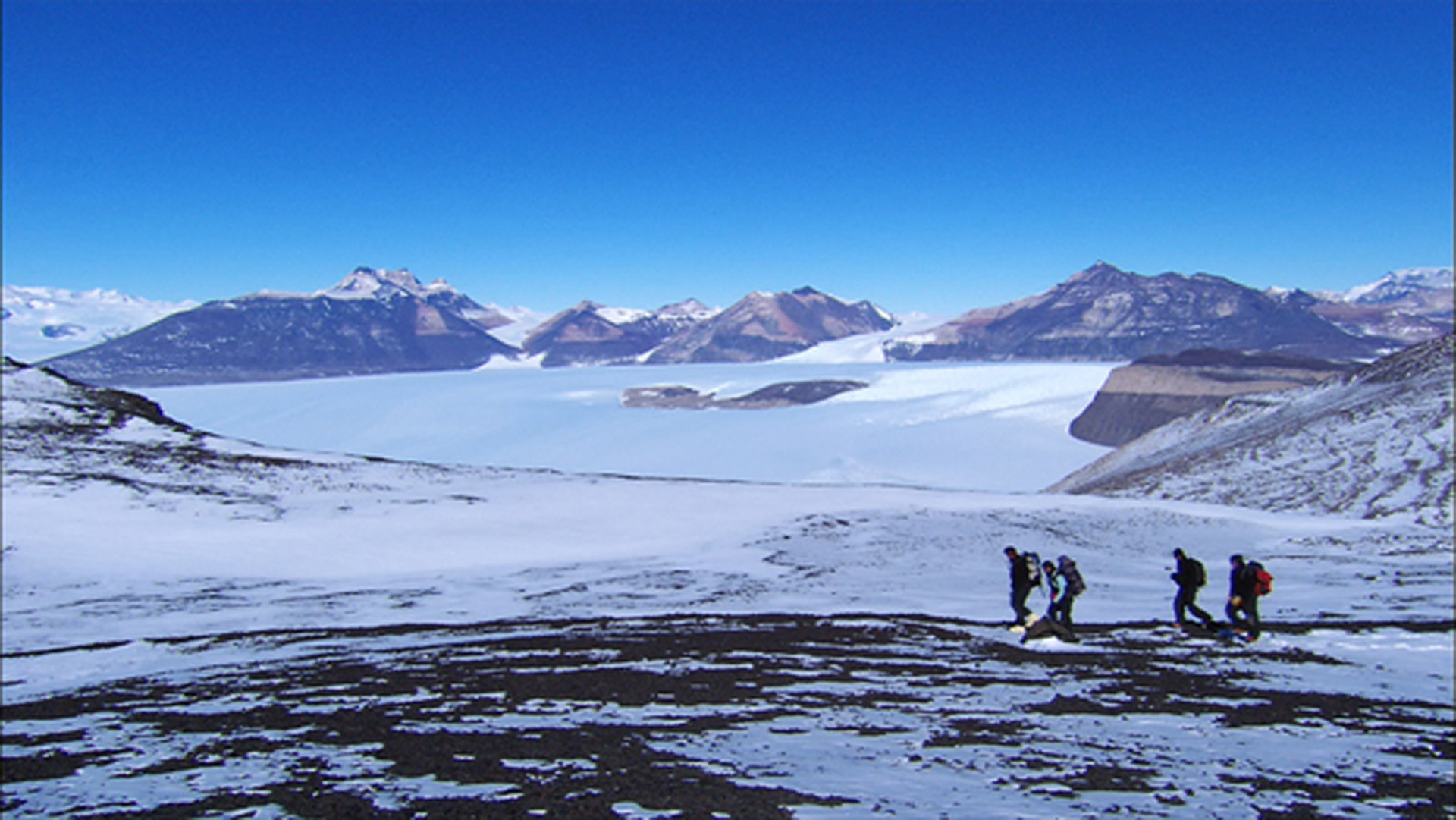Ice People is ostensibly a documentary about geologists in Antarctica, but beyond than that it’s a work of art about the continent’s landscapes. More than informing us about south pole science, director Anne Ahgion tells us something important about the processes of artistic and scientific creation.
In a central scene, the four geologists she whose work she chronicled climb up to one of the ridges of the Trans-Antarctic mountain range and gaze out over a huge ravine at a volcano. Aghion’s camera takes a long shot, showing a small human figure dwarfed against this primal landscape—one that only a handful of human beings have ever seen. It’s a moment of breathtaking, majestic beauty.
Soon thereafter we see one of the geologists, Adam Lewis, in a small trench, picking slowly through the stones at its bottom, examining them carefully, tasting a few, discarding some, carefully laying out others on the ground. The ones he selects are leaf fossils.
Lewis and his collaborator, Allan Ashworth, along with two undergraduates, are living in a tiny tent camp in the Antarctic interior. Among other things, they are seeking to map and characterize a lakebed that last held water some 15 million years ago.
And we see them sitting around a lot, while hurricane-speed winds rage outside, or just chatting.
Geology, like other field and basic sciences, is woefully inefficient. Ashworth, Lewis, and their students spent two months in their camp and came back with some rocks. As Ashworth tells us, in some places they dug trenches, looked at the rocks, and found nothing. Some finds are serendipitous—they turn up in unexpected locations, or when they are not what the scientists are looking for. While the official justification for scouting out the ancient lake is that it might provide some data to help understand the Antarctic’s role in climate change, what fires the geologists is not any possible contribution to public policy but, as Lewis says, simple curiosity—understanding why the mountain range is where it is, by what process these leaf fossils came to be preserved, the deep history of the landscape they see before them.
Aghion, her photographer, and her sound man spent the entire two months with the four geologists, talking and filming, to produce a 77-minute film. In the question-and-answer session after yesterday’s screening (in the Jerusalem Film Festival), she mentioned that most of the footage of the scientific team we had just seen had been shot during the expedition’s final week. She spent the bulk of her time up until then simply trying to gain the confidence of the scientists and achieving the rapport necessary for a good interview.
While the tent camp looks modest by any standard, Antarctic expeditions don’t come cheap. This kind of science, and this kind of art, are impervious to cost-benefit analysis. In writing their grant proposals, the scientists and the filmmakers no doubt promised top-flight results to their funding agencies. But I’m sure that if you’d caught them alone in a corner, they would have readily admitted that they could not know in advance if significant scientific finds, or a good film, would result. It was certainly possible that they’d spend two months out in the field and come back with no worthwhile finds, or not much of a film.
Science and art provide society with much value, but to get that value society must sponsor a lot of scientific and artistic projects that afterward look like wastes of time and money. And society must put up with the sight of scientists and artists spending a lot of time sitting around and seemingly doing nothing. It’s maddening for treasury and finance officials, but the society that allows such officials to apply their school-of-economics budget models to these endeavors winds up without good science and good art.
Ice People doesn’t, in the end, tell us much about the science being done in the Antarctic (I would have liked to know more). But it shows us stunning vistas and views, and tells us how much time it takes to find and study them.
~~~~~~~~~~~~~~~~~~~~~~~~~~~~~~~~~~~~~~~~~~~~~~~~~~~~~~~~
More from the Jerusalem Film Festival:
Sex in the Israeli City: “The Ran Quadruplets” Couple and Bore
and see Haim’s book about geology, biology, archaeology, and life in Israel’s rift valley:
A Crack in the Earth






